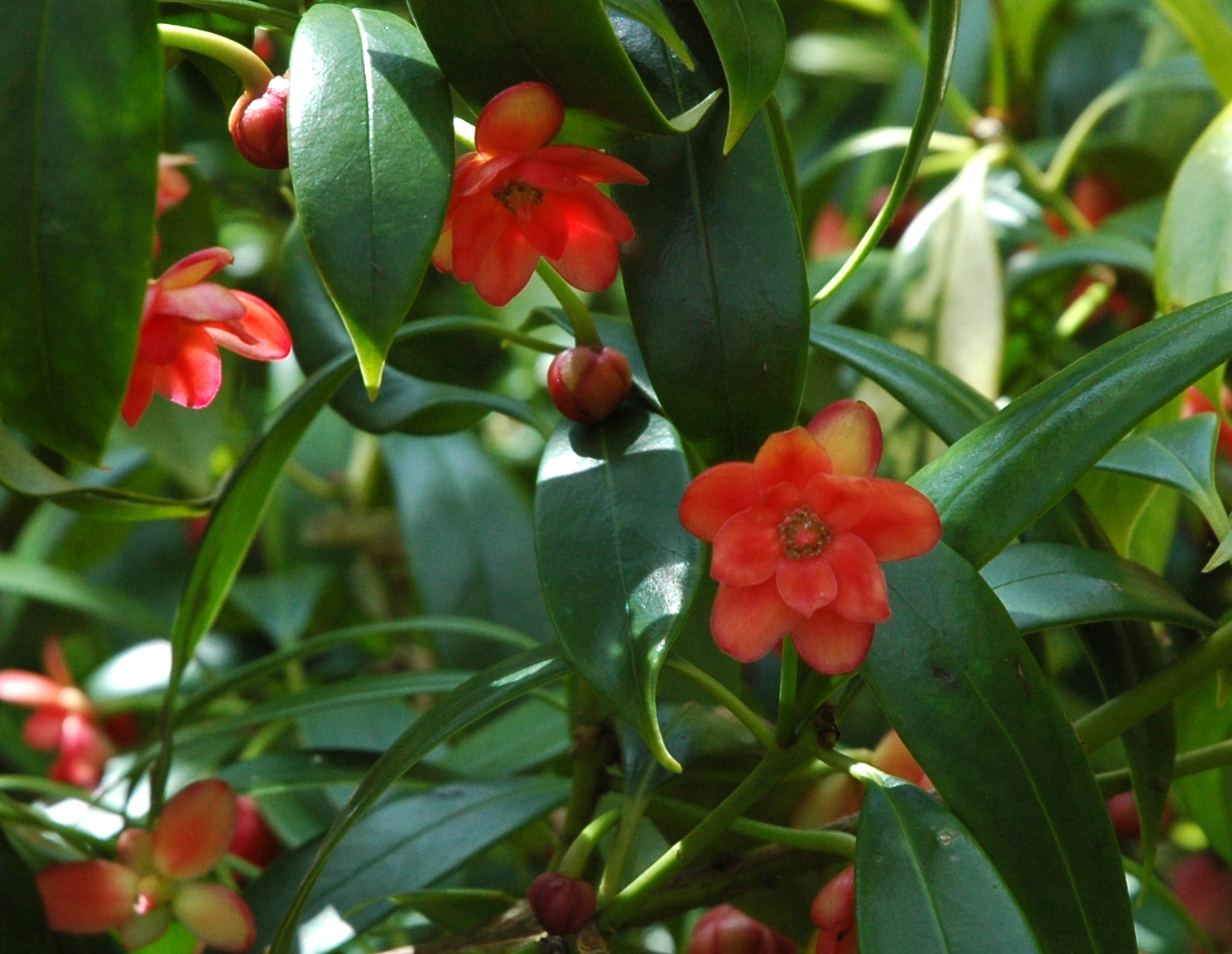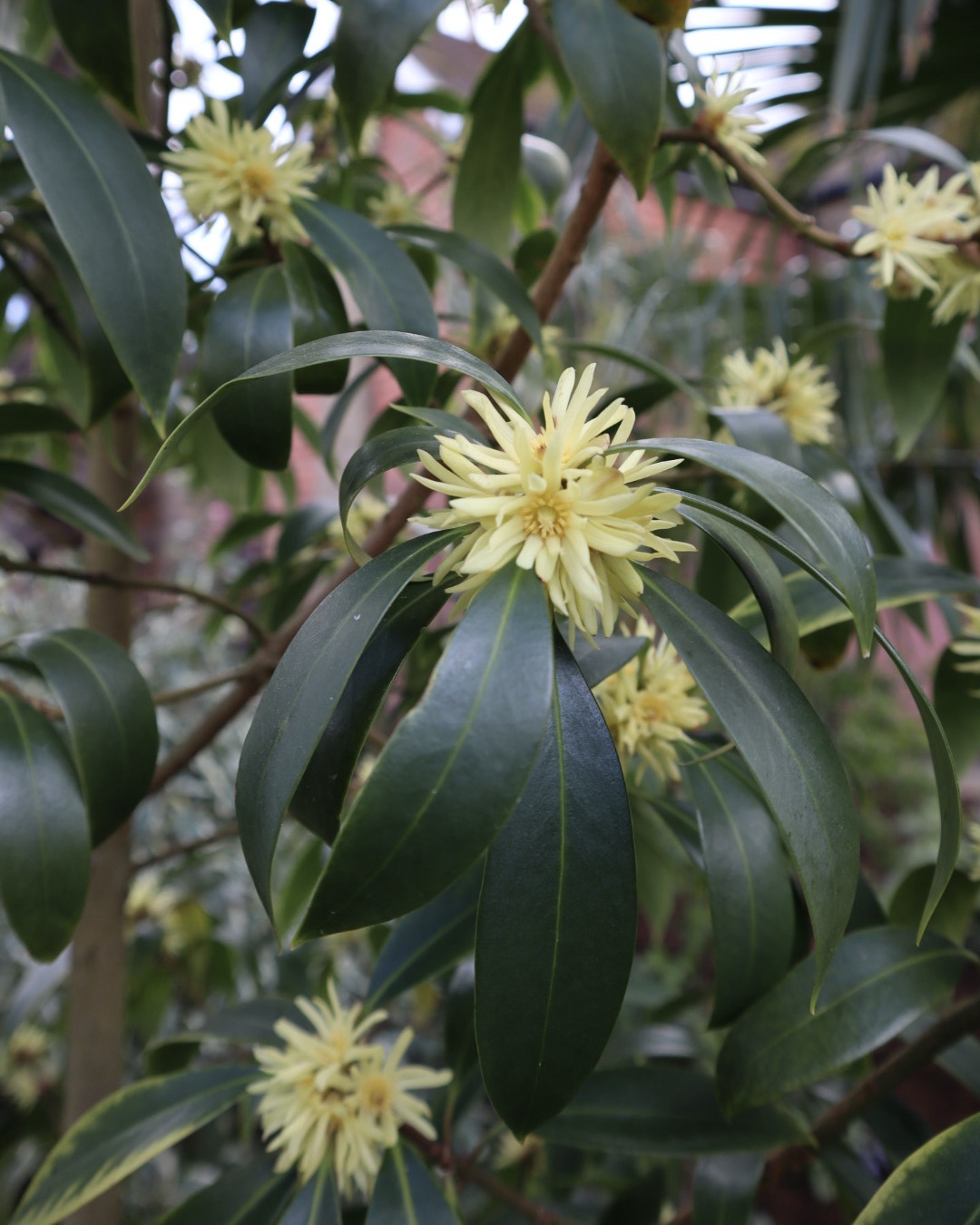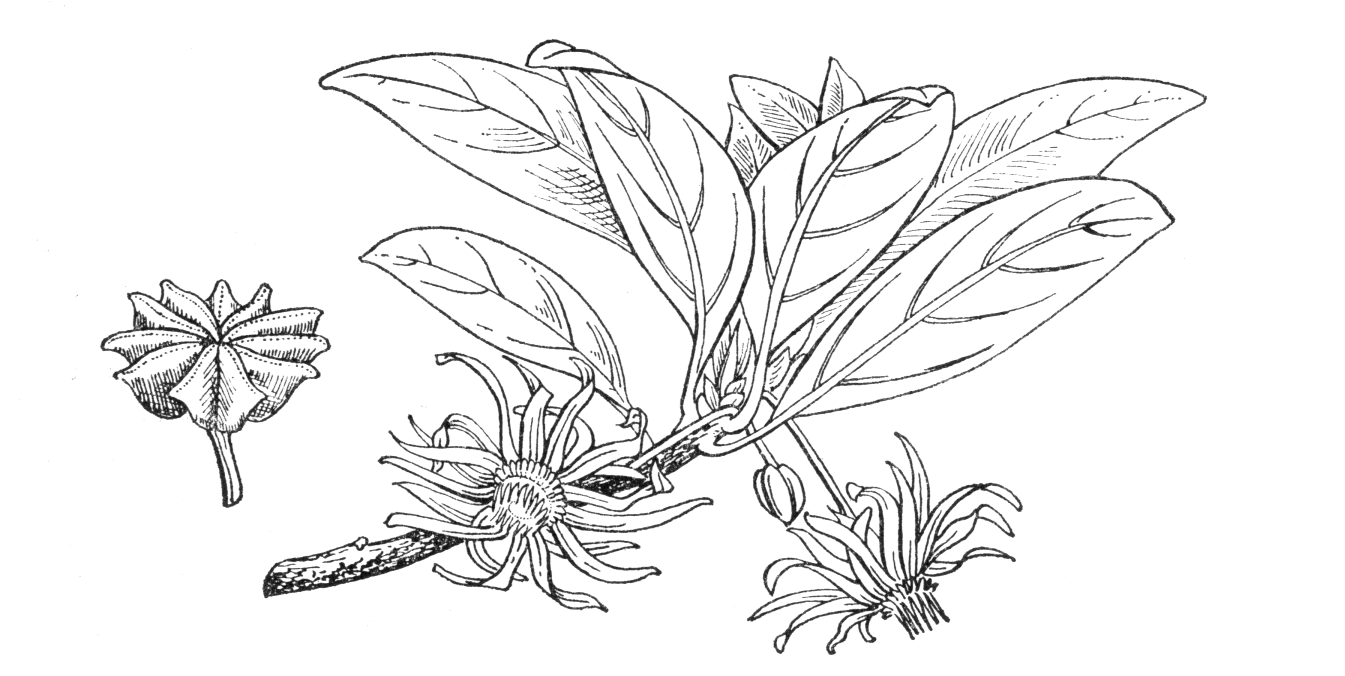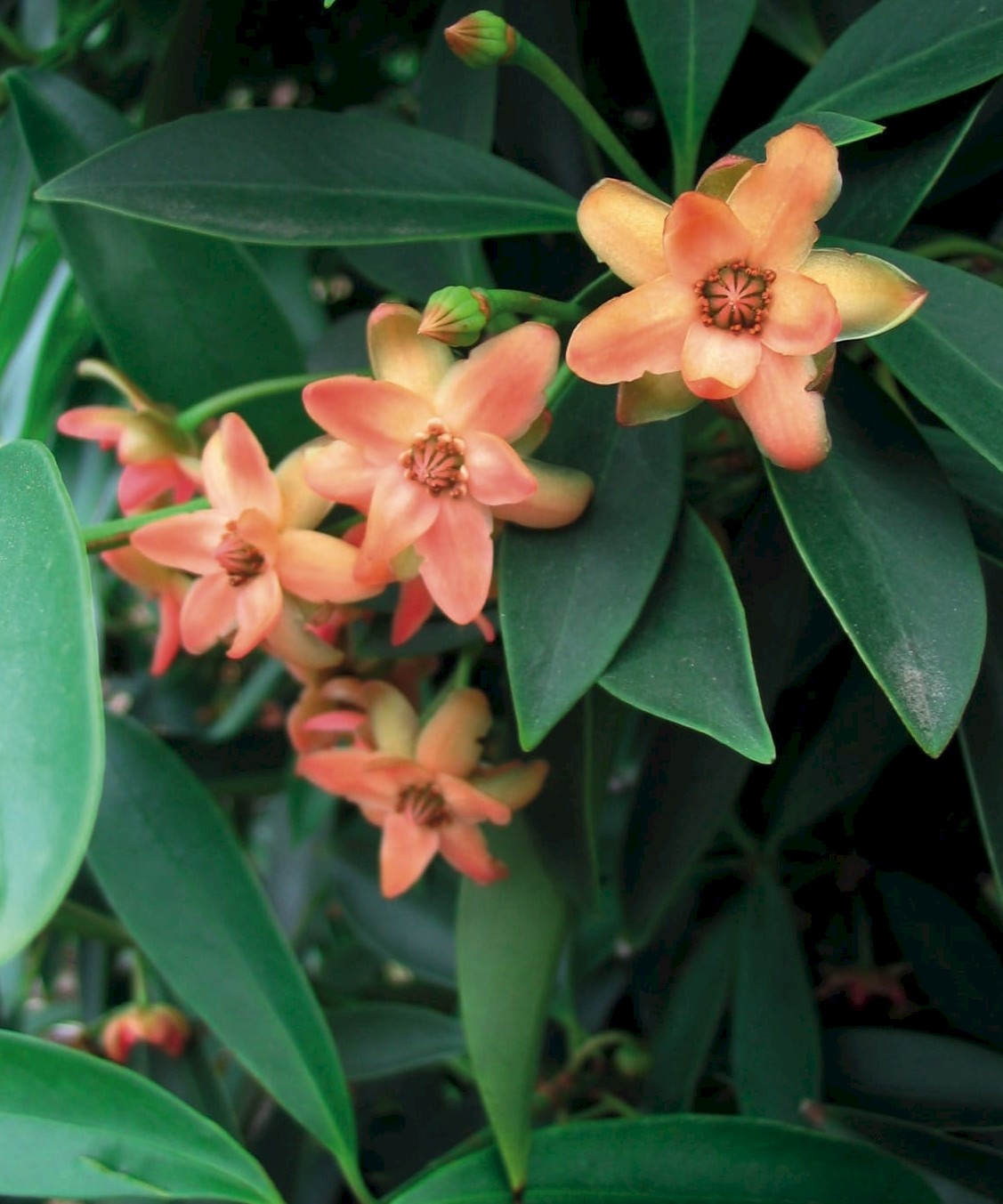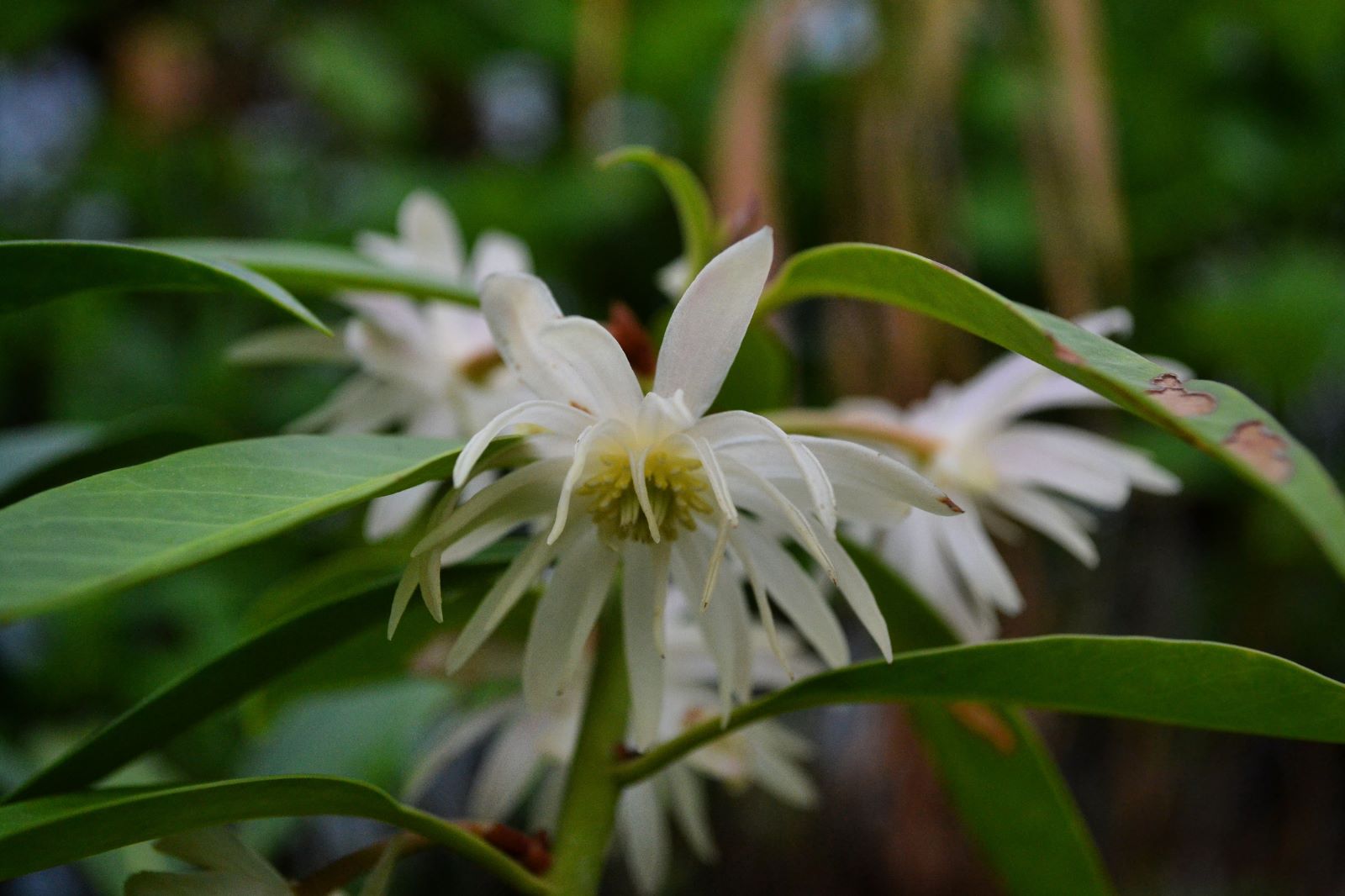Illicium
Credits
Article from Bean's Trees and Shrubs Hardy in the British Isles
Article from New Trees by John Grimshaw & Ross Bayton
Recommended citation
'Illicium' from the website Trees and Shrubs Online (treesandshrubsonline.
Family
- Illiciaceae
Common Names
- Anise Trees
Illicium is a genus of 40–50 species of evergreen shrubs or trees, found principally in southeast Asia from eastern India to northern Sumatra and extending northwards to Japan. A smaller number occur in the southeastern United States and adjacent Caribbean islands. Illicium species are almost all glabrous throughout the plant, but a few may have occasional hairs on new shoots. The buds are enclosed in conspicuous but caducous bud scales. The leaves are usually alternate but may be clustered or in false whorls at the ends of branchlets, usually dark green, paler below; the petioles with a channel on the upper surface; the lamina entire, chartaceous to coriaceous, decurrent on the petiole, the venation pinnate. The flowers are solitary, though sometimes appearing as if in small clusters, and are usually borne in leaf axils towards the shoot tips; they are hermaphrodite, and hypogynous; with numerous perianth segments (7–33), usually in several whorls, glandular, increasing in size inwards, the outermost usually small (but inner segments can also be smaller), either membranous or fleshy; 4–50 stamens, in one to several whorls, anthers bearing four sporangia; carpels (usually 7–15) free, in a single whorl, often closely pressed together, erect or spreading, with a flattened ovary attenuate into the short style, the stigmatic surface on the underside of the stigma. The fruit is a follicetum composed of a single whorl of spreading follicles, that dehisce ventrally. The seeds are ellipsoid or obovate, straw-coloured or brown.
Familiar to cooks in the shape of the spice star anise (the fruit of Illicium verum), the genus Illicium takes its name from the Latin for ‘allurement’, a reference to the enticing aromas that emanate from all parts of the plant. Not only their aroma renders them alluring to the gardener; they are good-looking evergreens capable of making handsome small trees (although shrubby when young or in cool areas), bearing attractive flowers. It is worth noting, however, that they are usually poisonous in all parts, and experiments in anise substitutes should not be attempted.
The monographer of Illicium, A.C. Smith (1947), had to record that the genus is ‘extraordinarily complex and taxonomically difficult’. He observed of I. floridanum: ‘it is a rare satisfaction to find a species of Illicium upon the identity of which all authors agree.’ Smith accepted 42 species, but the Flora of China treatment recognises several more. A few species are reasonably well known in temperate gardens, mostly those from more northerly areas, including the Japanese I. anisatum, the Chinese I. henryi, and I. floridanum from the southeastern United States. A number of selections of I. anisatum and I. floridanum are grown in the United States and are occasionally offered in Europe, and these have more recently been joined in cultivation by several other species from North America and Asia. Material of Mexican origin is commonly grown in North America under the name I. mexicanum A.C. Smith. This is treated as synonymous with I. floridanum by M.A. Vincent in Flora of North America (1997), as there are many overlapping characters between the two, although a study cited by Dirr (1998) suggested that there were chemical differences. In general, the appearance and tolerances of I. mexicanum are much the same as for I. floridanum. A clone selected by J.C. Raulston, ‘Aztec Fire’, has large, showy, dark red flowers and is widely recommended as a good garden plant for the southeastern United States. A seedling from a cross between I. mexicanum and I. floridanum ‘Album’ has been named ‘Woodland Ruby’ by Woodlanders Nursery, Aiken, South Carolina, and has large pink flowers. Although many Asian species have a southerly distribution, it is conceivable that others of them will be introduced and prove to be as hardy (or otherwise!) as the ones already established in cultivation.
All require hot summers to flourish and will do best where this warmth is coupled with high humidity, but when the wood is fully ripened they are capable of withstanding quite low temperatures. They are typically understorey plants, at least when young, but in cooler areas they should be planted in sun or very light shade. A moist acidic soil is most suitable. The strong odour of their foliage is repellent to deer.
Bean’s Trees and Shrubs
Illicium
A genus of about forty species of evergreen trees and shrubs, natives of E. and S.E. Asia, the eastern USA, Mexico, and the West Indies. It is the only genus in the family Illiciaceae, which is allied to the Magnolia family but differs in the carpels being borne in a single whorl round a central axis, developing into a star-shaped fruit, not cone-shaped as in Magnoliaceae. A closer ally is the Winteraceae (Drimys, etc.) but in that group the sepals are valvate, not imbricate as in Illicium.
Three species are grown out-of-doors in the British Isles, one from the S.E. United States, the other two from China and Japan. All are rather tender. They prefer a partially peaty soil, especially until well-established, and can best be propagated by layers.

